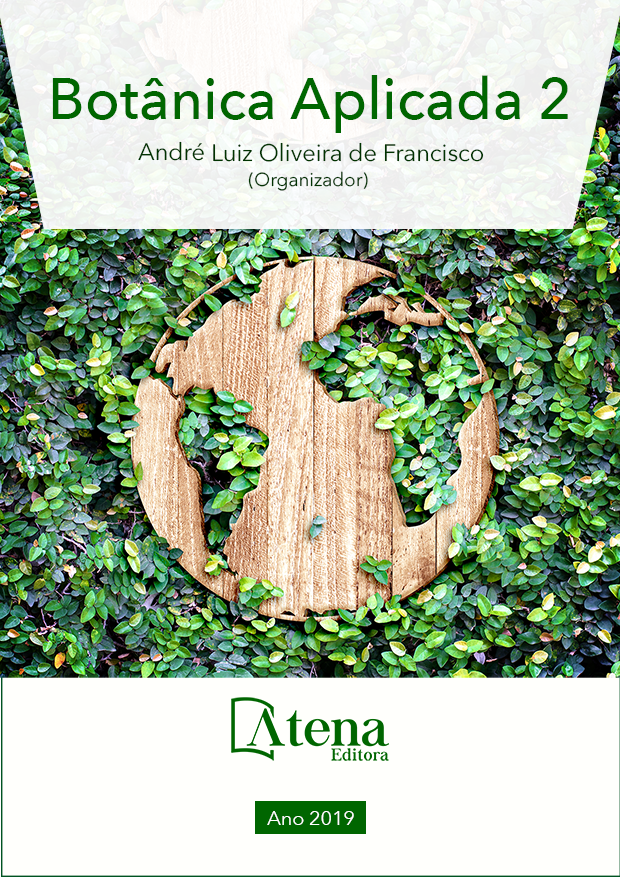
MONITORAMENTO DE BACTÉRIAS SISTÊMICAS EM ACESSOS DE CITROS DO BANCO ATIVO DE GERMOPLASMA DA EMBRAPA
A citricultura configura-se como
uma das atividades mais importantes para o
desenvolvimento agrícola brasileiro, que lidera
o ranking de exportação mundial. A clorose
variegada dos citros (CVC), causada pela
bactéria Xylella fastidiosa subsp. pauca Wells
et al. e o Huanglongbing (HLB), causado pela
bactéria Candidatus Liberibacter spp., são
doenças de grande importância econômica
para os citros. O objetivo desse trabalho foi
indexar os acessos de citros do Banco Ativo
de Germoplasma da Embrapa Mandioca e
Fruticultura (BAG-Citros) para a presença
das bactérias sistêmicas X. fastidiosa e Ca.
L. asiaticus, por meio da Reação em Cadeia
da Polimerase (PCR). Para tanto, amostras
foliares de acessos do BAG-Citros foram
coletadas e submetidas à extração do DNA
total. Para o diagnóstico molecular, amplificouse
o DNA da X. fastidiosa utilizando os primers
específicos RST31 e RST33, e os primers LPas
e RPas para amplificação da Ca. L. asiaticus.
Após amplificação, as amostras foram
submetidas à eletroforese em gel de agarose
de 1,5%, a 110v por 02 horas. Ao todo foram
analisados 500 acessos para X. fastidiosa e
100 acessos para Ca. L. asiaticus, por meio do
diagnóstico molecular, e todos foram negativos
para presença de DNA de ambos agentes.
Os controles positivos apresentaram os
fragmentos esperados de, aproximadamente,
750pb e 960pb, respectivamente. A Embrapa
é responsável pela distribuição de material
propagativo de citros para todo Brasil. Dessa
forma, a certificação da sanidade dos acessos
do BAG-Citros é importante, contribuindo assim
para a defesa fitossanitária nacional.
MONITORAMENTO DE BACTÉRIAS SISTÊMICAS EM ACESSOS DE CITROS DO BANCO ATIVO DE GERMOPLASMA DA EMBRAPA
-
Palavras-chave: CVC, Amarelinho, HLB, Huanglongbing, Melhoramento Genético.
-
Keywords: CVC, Amarelinho, HLB, Huanglongbing, Genetic Enhancement.
-
Abstract:
Citriculture is one of the most
important activities for Brazilian agricultural
development, and it is the world’s leading
agricultural export product. Citrus variegated
chlorosis (CVC), caused by the bacterium
Xylella fastidiosa subsp. pauca Wells et al. and
Huanglongbing (HLB), caused by the bacterium Candidatus Liberibacter spp., are
diseases of great economic importance for citrus. This work aims to index the citrus
accesses of the Active Germplasm Bank from Embrapa Mandioca e Fruticultura (BAGCitros)
for the presence of the systemic bacteria X. fastidiosa and Ca. L. asiaticus
by means of the Polymerase Chain Reaction (PCR). To achieve this, leaf samples
of BAG-Citros accessions were collected and submitted to total DNA extraction.
For molecular diagnosis, X. fastidiosa DNA was amplified using the specific primers
RST31 and RST33, and primers LPas and RPas for amplification of Ca. L. asiaticus.
After amplification, the samples were submitted to 1.5% agarose gel electrophoresis,
at 110v for 2 hours. 500 accessions of X. fastidiosa and 100 accessions of Ca. L.
asiaticus were analyzed through molecular diagnosis, and all the results were negative
for the presence of DNA from both agents. Positive controls showed the expected
fragments of approximately 750bp and 960bp, respectively. Embrapa is responsible
for the distribution of citrus propagating material throughout Brazil. Thus, certificating
the welfare of the accesses of BAG-Citros is important to the contribution of national
phytosanitary defense.
-
Número de páginas: 15
- Cristiane de Jesus Barbosa


